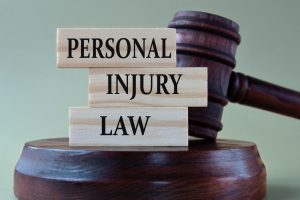Negligence is a term commonly thrown around when discussing personal injury cases. However, it is not completely understood by the average person. On one hand, it is easy to breach a reasonable standard of duty. On the other, it can be difficult to prove all of the elements of negligent conduct exist. Therefore, plaintiffs and defendants alike must understand negligence from all angles. Keep reading as we explore the ins and outs of negligence in personal injury claims and how an experienced personal injury attorney can help you navigate the murky waters of negligence cases.
What Is Negligence in Personal Injury Law?
Negligence is the failure to act reasonably to prevent foreseeable harm to a victim.
When someone acts negligently and causes injury to another person, the negligent person will be legally liable to provide compensation to the victim.
Elements Necessary to Prove Negligence in Personal Injury Claims
According to Erika Garnes of Abogados De Accidentes De Carro Y Lesiones En Miami:
"In the world of personal injury claims, negligence acts as our roadmap, helping us navigate the twists and turns of legal proceedings. By understanding its ins and outs, we're better equipped to pursue fairness and compensation, ensuring justice is served for those who've been wronged."
While each personal injury case will contain unique components, four overarching elements must be present for negligence to be proven:
- Duty - the defendant owes the plaintiff a legal duty to act in a certain way. For example, motorists have the duty to pedestrians and each other to obey all traffic laws.
- Breach - the defendant breached their duty to the plaintiff by failing to act in a certain way. The “reasonably prudent person” standard assesses if the defendant acted in the manner of a reasonably prudent person in the same situation.
- Causation - the negligence of the defendant did cause injury to the plaintiff.
- Damages - as a result of the defendant’s negligent actions, the plaintiff suffered damages from which he or she must recover.
All four elements must be present for a plaintiff to receive compensation in a negligence case. For example, a speeding motorist may be breaching their duty to act reasonably, but if the said motorist was on a different street from where an accident took place, it will be impossible to prove causation, making a negligence charge incomplete.
Type of Negligence in Personal Injury Claims
Within the broad scope of personal injury negligence, there are four types of negligence for a court to consider.
Gross Negligence
This is the most serious form of negligent conduct. In addition to hefty civil judgments, defendants found guilty of gross negligence will often face serious criminal penalties. Think of a motorist going 100 MPH through a flashing school zone or a doctor performing surgery while heavily intoxicated.
Comparative Negligence
This occurs when multiple parties are at fault for the injury. For example, if a speeding motorist hits a jaywalking pedestrian. Both are in breach of their duty to act reasonably.
In comparative negligence cases, a verdict may find that the defendant is 75% at fault and the plaintiff is 25% at fault. As such, if the judgment were for $100,000, the plaintiff would only receive $75,000.
Contributing Negligence
This is similar to comparative negligence in that multiple parties are in breach of their duty. However, if the plaintiff is found to be negligent at all, they will not receive compensation for damages. Some states use a hybrid form of contributing negligence where the defendant will only have to pay if they are more than 50% responsible for the damages. Because this form of negligence is seen as harsh on the plaintiff, it is not practised in all states.
Vicarious Negligence
This is when a person or company is held responsible for the liability of another. It is commonly enacted when parents are held responsible for the actions of their minor children or companies are held responsible for the negligent acts of their employees within the scope of normal business activities.
Best Practices for Winning Negligence Cases
Although teaming with an experienced personal injury attorney is the best step you can take toward winning a negligence case, there are several best practices you can take to successfully prove or defend negligence:
- Documentation - this is key for establishing duty. Any messages, files, photos, or the like can help prove a duty exists.
- Photos of the accident scene - these will be essential for proving breach, causation, and damages.
- Witness statements and officer citations - these will help corroborate the photo evidence.
- Medical records - these can help prove the extent of injury and will be critical in arriving at damages.
- Bills, receipts, invoices - these will help the jury decide on fair compensation for damages.
Remember to only testify or record depositions in the presence of your personal injury attorney. Any slip-up may impact the results of the case.
Contact a Personal Injury Lawyer for a Negligence Claim Today
Negligence is the failure to act reasonably to avoid harming a victim. While it is relatively straightforward in concept, its various elements and forms can make winning a negligence case a bit tricky. For more on negligence in personal injury cases, explore the content at Lawyer Monthly for the leading resources in the legal field.





















